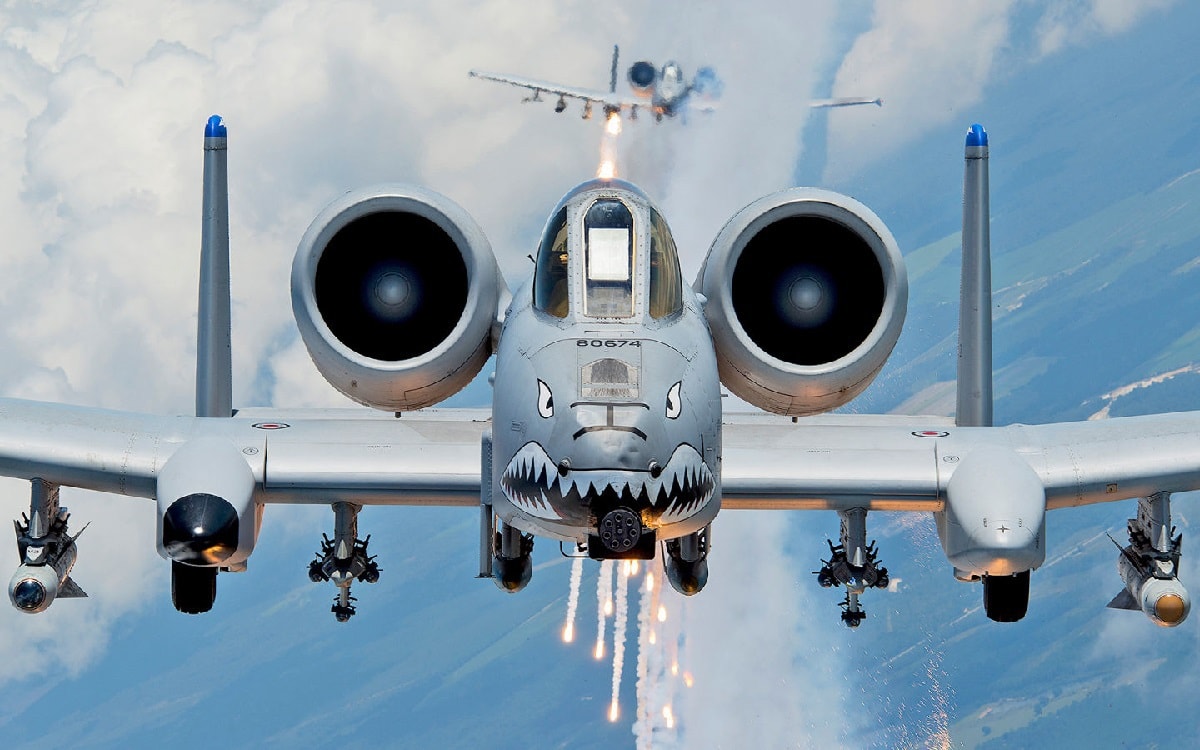Will no one rid us of this troublesome A-10 ‘Warthog’? The United States Air Force (USAF) has spent almost two-thirds of its existence as an independent service trying to get rid of the A-10, one of its most well-known aircraft. But has the Air Force finally given up? It is odd to think that a fifty-year-old aircraft might have more job security now than at any time in its long history, but it does seem that the Warthog now has a relatively secure space in the USAF fleet.
The USAF has operated the A-10 Thunderbolt II, known affectionately as the “Warthog,” since 1976. The attack aircraft was designed on the one hand as an update to piston-engined planes such as the A-1 Skyraider, and on the other as a hedge against the development of advanced attack helicopters by the US Army. The USAF worried that technologically advanced Army helicopters could take over the close air support mission that its aircraft had (grudgingly) performed in Korea and Vietnam, thus undercutting the argument that the Air Force needed multi-use jets to perform that task.
It is only a mild exaggeration to say that factions of the Air Force have been trying to eliminate the A-10 since the day it first flew. Indeed, some in the Air Force sought to strangle the project in utero after the cancellation of the Army’s Cheyenne attack helicopter. While the A-10 was expected to be more at home on the battlefields of Central Europe than the aircraft it replaced, the Air Force still believed it would suffer from high rates of attrition against well-protected Warsaw Pact forces. This was an acceptable sacrifice in the context of a war that was expected to last days or weeks rather than years, although the aircraft was unpopular with a service more interested in advanced fighter aircraft. Thus, the A-10 remained controversial throughout the 1980s.
With the end of the Cold War and the end of the threat of the Red Army, the logic of retaining the Warthog seemed to lose its edge. The immense and unexpected success of the Warthog in Operation Desert Storm helped validate the plane’s concept and win it a degree of public acclaim. Nevertheless, the Air Force undertook a study to retire the A-10 as part of the general drawdown of Cold War aircraft in the 1990s, and similar studies in the 2000s and 2010s. In both cases Congressional pressure, along with the quiet influence of the US Army, helped save the aircraft. Similar pressure seems to have convinced the USAF that there’s no good prospect for eliminating the plane in the foreseeable future.
The arguments for retiring the A-10 are sound, as far as they go. The Air Force does not believe that the A-10 is any more survivable in hostile air space now than it was in 1976. While maintenance and operational costs for the A-10 are low, it still takes up a cadre of pilots and aircrew who could more profitably be allocated to other aircraft. A half-serious proposal to shift the A-10 to the Army ran aground on a host of bureaucratic and logistical difficulties. Efforts to protect the A-10 have typically come from Congress, which has repeatedly demonstrated a reluctance to give up on the attack plane. This in itself is somewhat unusual, as the A-10 no longer offers any particularly useful “pork” to more than a very few members of Congress who represent districts with basing, maintenance, and upgrade contracts.
There are also sensible arguments in the Warthog’s favor. While it is true that the A-10 will not fare well against modern air defenses, the same can largely be said of other legacy platforms such as the F-15, F-16, and B-52. In any imaginable conflict scenario against a peer opponent, US aircraft will need to put themselves in harm’s way. There will undoubtedly be instances in which the A-10 could effectively be used in relatively safe ways; for example, an isolated conflict zone in which enemy resistance persisted but the main air defense assets had been destroyed. The A-10 has also demonstrated its utility in expeditionary conflicts against enemies without advanced air defenses, and the United States may still feel the need to fight these kinds of conflicts, even in the era of renewed Great Power Competition.
Still, it is awfully strange from the perspective of 1970s to imagine the USAF fleet full of aircraft it had expected to eliminate in the 1960s (the B-52), and that it never really wanted in the first place. Indeed, the decision to restart the acquisition of the F-15, while quite sensible in its own terms, speaks to the strange and unpredictable relationship between military procurement and geostrategic influences. The A-10 has already flown longer than anyone expected, and the end is no longer in sight.
Now a 1945 Contributing Editor, Dr. Robert Farley is a Senior Lecturer at the Patterson School at the University of Kentucky. Dr. Farley is the author of Grounded: The Case for Abolishing the United States Air Force (University Press of Kentucky, 2014), the Battleship Book (Wildside, 2016), and Patents for Power: Intellectual Property Law and the Diffusion of Military Technology (University of Chicago, 2020).

